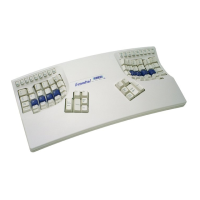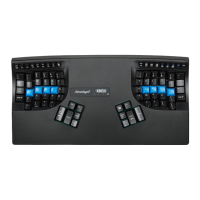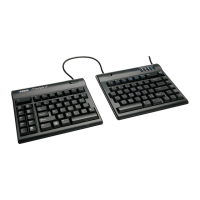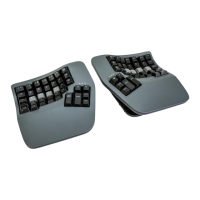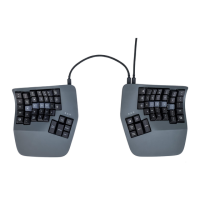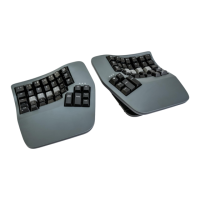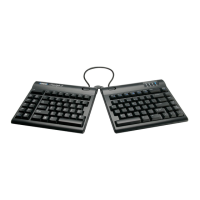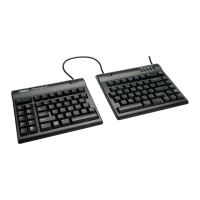15
Layout Programming Tips
If the keyboard cannot understand the desired remap, then the default action will remain in effect.
Do not mix and match square and curly brackets in a single line of code
Separate each line of code with Enter/Return
The order in which the lines of code appears in the .txt file does not generally matter, except in the event
of conflicting commands, in which case the command closest to the bottom of the file will be implemented.
Tokens are not case-sensitive. Capitalizing a token will not produce the capitalized action (see Section
6.5).
A line of code can be temporarily disabled by placing an asterisk (*) at the beginning of the line.
6.2 Position Token Map
Top Layer Position Tokens
Fn Layer Positions
In general, to designate a key position in the Fn layer, you simply encode the prefix “fn“ (with a space) before
the basic, top-layer token. The “fn” prefix goes outside of the brackets. Examples:
The embedded Hotkey 1 position is: fn [hk1]>...
The embedded Escape key position is: fn [esc]>...
However, for the seven keys which have a unique embedded key action, there is a unique Fn layer token
which corresponds to the embedded layer action for that key position.
TopLayer
PosionToken
[F1] [F2] [F3] [F4] [F5] [F6]
FnLayer
PosionToken
fn [MUTE] fn [VOL-] fn [VOL+] fn [PLAY] fn [PREV] fn [NEXT]
[PAUSE]
fn [INS]
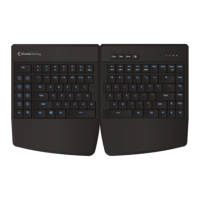
